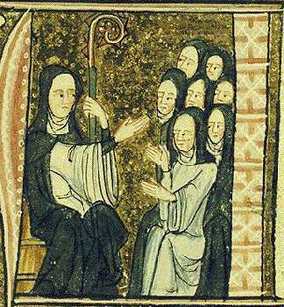Reminding us that the Holy Spirit "continues to inspire women and men who engage in the pursuit of truth" Pope Benedict announced that on October 7, at the beginning of the Ordinary Assembly of the Synod of Bishops, he would proclaim St. John of Avila and St. Hildegard of Bingen as Doctors of the Church. "These two great witnesses of the faith lived in very different historical periods and came from different cultural backgrounds," he said. "But the sanctity of life and depth of teaching makes them perpetually present: the grace of the Holy Spirit, in fact, projected them into that experience of penetrating understanding of divine revelation and intelligent dialogue with the world that constitutes the horizon of permanent life and action of the Church."
The Pope continued: "Especially in light of the project of the New Evangelization, to which the Assembly of the Synod of Bishops will be dedicated, and on the vigil of the Year of Faith, these two figures of saints and doctors are of considerable importance and relevance."




